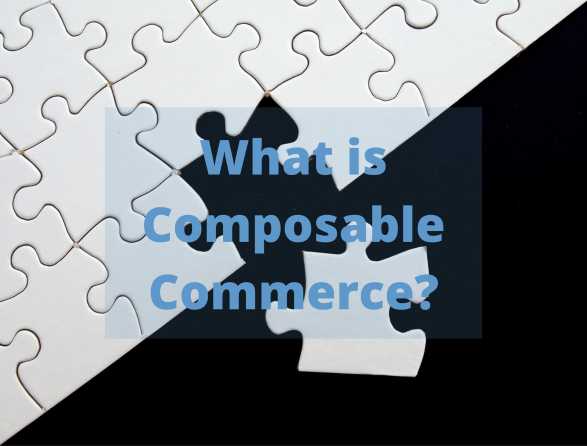The Product Information Management (PIM) industry moves fast. There are ever improving solution platforms and ever evolving ways to approach data management. Phrases like “Composable Commerce ” and “Headless Commerce ” are appearing more frequently but what exactly do they mean? Sitation’s George Dzuricsko is here to provide some clarity.
Aishia Williams: Hi George! How long have you been working at Sitation and what is your role?
George Dzuricsko: I started at Sitation in January of 2020, so I’m going on about two and half years. I’ve had a couple of titles in that time, but I currently am the Senior Director of Solution Architecture.
Aishia: Thanks for agreeing to help. Let’s get right to it. In a way that I can understand, what is composable commerce?
George: Composable commerce is the ecommerce approach of leveraging several ‘best of breed’ solutions to handle different components of commerce as opposed to one ‘All-in-one’ solution. Technical readers will see the obvious influence of a microservices architecture here vs a more mainframe approach.
Aishia: So basically, you can mix and match different ecommerce solutions. Does that mean you can swap out pieces as needed as opposed to updating everything at once?
George: Yea. Exactly right.
Aishia: Is that the same thing as headless commerce?
George: No, but they are definitely aligned. Headless commerce decouples the front end (presentation layer) of a commerce system from the back end systems that handle integrations and data management. This allows for much better multi channel commerce systems and more flexible approaches.
Aishia: So I can change my customer’s website experience without having to change any other ecommerce systems?
George: If it’s designed right, yes.
Aishia: Who is the target/Ideal candidate for this set up? Who does it help and how?
George: Anyone who sells products. I would argue everyone does some version of product information management, a lot of them are just bad. Four years ago we encountered a number of clients leveraging multiple spreadsheets here, where most clients we encounter now are managing in an outdated ERP, homegrown database or ecommerce system.
A product doesn’t have to be a physical item. Warranties and service offerings should also be enriched with content. In addition, we have a client who sells product data as a component of their software tool that generates automated quotes for commercial kitchenware equipment. It’s a different use case, but quality enriched product data is still critical.
Aishia: What is the value?
George: Until you hold the product, your product data is the product for your consumers. How many times have you navigated to another site if you didn’t have enough information to feel confident purchasing? That’s how valuable this is. Cost of returns, lost sales, reputation, and the added resourcing costs for enrichment.
Aishia: How can I learn more?
George: Akeneo has some helpful content on PIM as a Keystone for Headless Commerce but always feel free to reach out to us here at Sitation to learn more about how this and other solutions can change the game.
Aishia: Thanks George! For those interested in interacting with this new information, join George Dzuricsko and others for an Akeneo partner Linkedin Live, Talk PIM to Me: A Virtual Roundtable on Composable Commerce on Tuesday, May 24, 2022.




